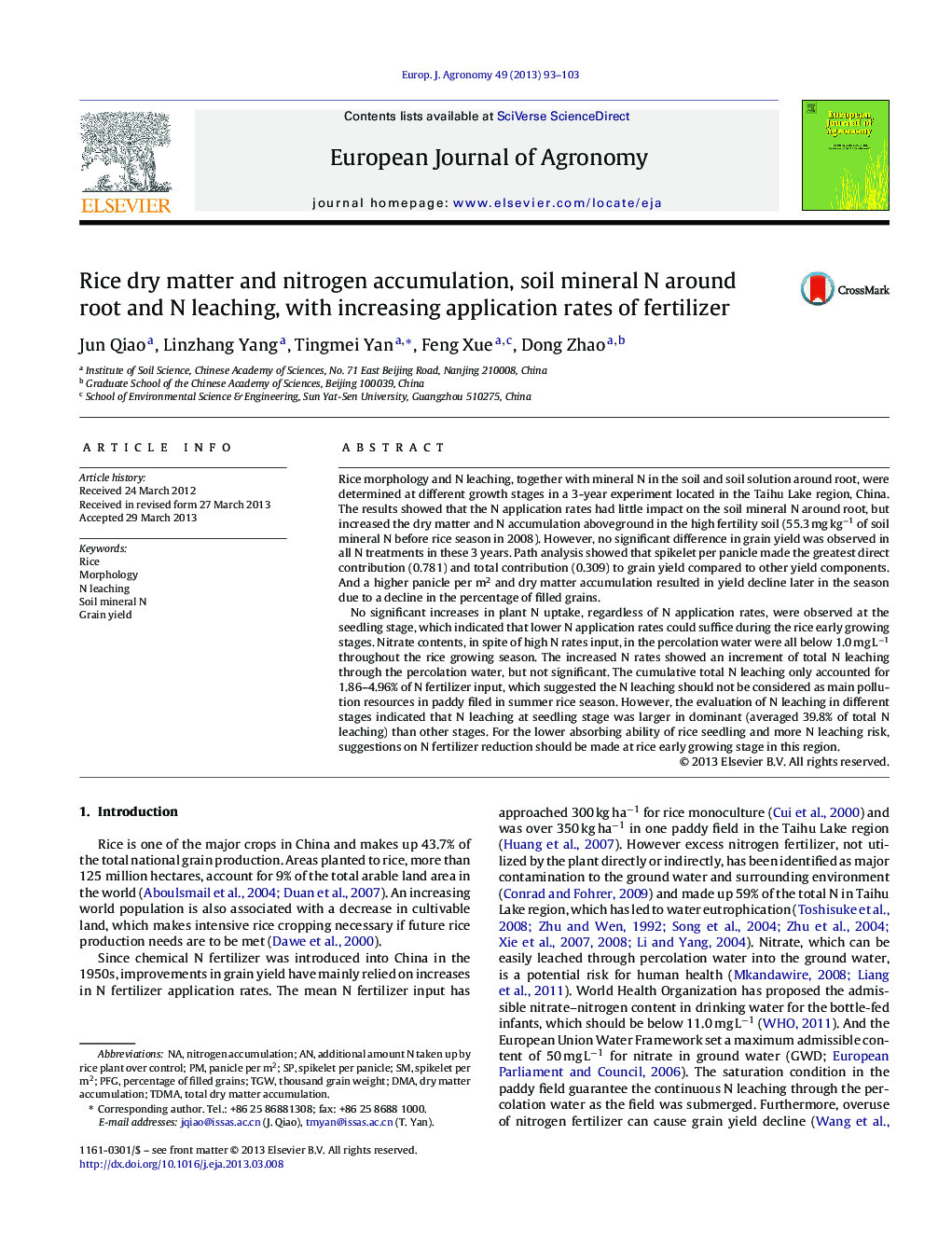| کد مقاله | کد نشریه | سال انتشار | مقاله انگلیسی | نسخه تمام متن |
|---|---|---|---|---|
| 4509091 | 1624477 | 2013 | 11 صفحه PDF | دانلود رایگان |

• Different N application rates had little impact on the soil mineral N concentration around root, but increased the rice dry matter and N accumulation aboveground.
• N leaching should not be considered as main pollution resources in paddy filed in summer rice season.
• N fertilizer reduction should be made at rice early growing stage in Taihu Lake region.
• Spikelet per panicle made the greatest direct contribution and total contribution to grain yield.
Rice morphology and N leaching, together with mineral N in the soil and soil solution around root, were determined at different growth stages in a 3-year experiment located in the Taihu Lake region, China. The results showed that the N application rates had little impact on the soil mineral N around root, but increased the dry matter and N accumulation aboveground in the high fertility soil (55.3 mg kg−1 of soil mineral N before rice season in 2008). However, no significant difference in grain yield was observed in all N treatments in these 3 years. Path analysis showed that spikelet per panicle made the greatest direct contribution (0.781) and total contribution (0.309) to grain yield compared to other yield components. And a higher panicle per m2 and dry matter accumulation resulted in yield decline later in the season due to a decline in the percentage of filled grains.No significant increases in plant N uptake, regardless of N application rates, were observed at the seedling stage, which indicated that lower N application rates could suffice during the rice early growing stages. Nitrate contents, in spite of high N rates input, in the percolation water were all below 1.0 mg L−1 throughout the rice growing season. The increased N rates showed an increment of total N leaching through the percolation water, but not significant. The cumulative total N leaching only accounted for 1.86–4.96% of N fertilizer input, which suggested the N leaching should not be considered as main pollution resources in paddy filed in summer rice season. However, the evaluation of N leaching in different stages indicated that N leaching at seedling stage was larger in dominant (averaged 39.8% of total N leaching) than other stages. For the lower absorbing ability of rice seedling and more N leaching risk, suggestions on N fertilizer reduction should be made at rice early growing stage in this region.
Journal: European Journal of Agronomy - Volume 49, August 2013, Pages 93–103